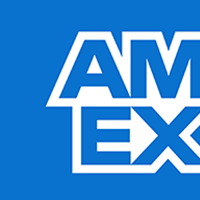Investing in Valuable Walking Liberty Half Dollars: A Guide
By Bullion Standard ·
6 min read

Various gold bars and a 500-gram silver bar showcased on a sleek black background.
Discover the Allure of Walking Liberty Half Dollars: History Meets Investment
Walking Liberty half dollars, struck by the United States Mint between 1916 and 1947, are celebrated icons of American numismatics. Designed by renowned sculptor Adolph A. Weinman, these coins are cherished not only for their aesthetic appeal but also for their historical significance and silver content. Collectors and investors alike are drawn to these treasures for their intrinsic value, engraved with the beauty of Liberty striding forward in strength and grace.
Their popularity among investors stems from their dual appeal: a tangible asset due to their silver composition and a collectible item with historical interest. As economic conditions fluctuate, these coins often retain value, offering a hedge against inflation and currency devaluation. This guide aims to illuminate prospective investors on how to assess the value and potential returns of Walking Liberty half dollars, guiding them through the facets of numismatic worth and investment strategy.
Understanding Walking Liberty Half Dollars
The face value of Walking Liberty half dollars belies their true worth, rooted in both their silver content and numismatic interest. Composed of 90% silver and 10% copper, these coins each contain approximately 0.3617 troy ounces of fine silver. This intrinsic silver value often serves as a baseline for pricing, fluctuating with the market price of silver.
Factors contributing to their value extend beyond metal content, delving into the realm of numismatics. The melt value, determined by the current per-ounce price of silver, anchors the lower end of the price spectrum. However, collectors are also enticed by attributes such as rarity, historical minting errors, and unique designs. Major mint marks like those found from the Philadelphia, Denver, and San Francisco mints can significantly impact a coin’s desirability and value.
Coin grading—the assessment of a coin's condition—plays a vital role in valuation. Higher-grade coins, often uncirculated or in excellent condition, demand premiums beyond their melt value. Professional grading services, such as PCGS (Professional Coin Grading Service) and NGC (Numismatic Guaranty Corporation), provide reliable certification, adding to a coin’s credibility and marketability.
Key Factors in Walking Liberty Half Dollar Investments
Rare Finds and the Role of Demand
Among Walking Liberty half dollars, certain editions stand out due to their rarity or distinctive features. Coins such as the 1919-D, 1921, 1921-D, and 1938-D, due to limited mintage, have become highly coveted. Their rarity, coupled with an increasing number of collectors entering the market, fuels demand and elevates prices. Additionally, errors or variations in minting, such as doubled dies or misplaced mint marks, can enhance a coin’s allure and value significantly.
How Economic Waves Influence Value
The market for Walking Liberty half dollars is not immune to economic influences. During periods of economic instability, like the Great Depression and recent financial crises, investors often gravitate towards tangible assets such as silver coins. Historical data reveals that silver coins, including Liberty half dollars, often experience a rise in value during such times, serving as a safe haven.
Ensuring Authenticity and Maximizing Coin Condition
Ensuring the authenticity of Walking Liberty half dollars is essential for protecting your investment. Counterfeit coins exist, and distinguishing between genuine coins and replicas requires due diligence. Engaging with reputable dealers and pursuing professional grading are prudent steps in assessing authenticity. In terms of condition, even slight variations in a coin's quality can significantly affect its market price, making expertise in grading indispensable for investors.
Essential Tips for Buying Walking Liberty Half Dollars
- Conduct Thorough Research: Investigate market prices and trends before acquiring Walking Liberty half dollars. This knowledge equips you with a benchmark for evaluating offers and avoiding overpayment.
- Purchase from Reputable Dealers: Engage with established dealers or auction houses known for their integrity to ensure genuine and fairly priced coins.
- Understand Grading Standards: Familiarize yourself with grading standards and services that assess the condition and authenticity of coins, as these elements significantly influence their value and collectibility.
- Assess Premiums and Strategy: Decide if you prefer purchasing rare pieces at premiums for potential appreciation or common coins for their melt value.

Pros and Cons of Investing in Walking Liberty Half Dollars
Pros:
- High Silver Content: The intrinsic value of the silver provides investors with a tangible asset that often appreciates alongside precious metals markets.
- Historical Interest and Collectibility: These coins are sought by collectors worldwide, bolstering their demand and potential resale value.
- Potential for Appreciation: Rare and high-condition coins can experience significant appreciation, offering profitable returns for investors who select wisely.
Cons:
- Market Volatility: Silver prices can be unpredictable, impacting the melt value of the coins.
- Risks in Condition and Authenticity: The need for expertise in grading and authentication to avoid counterfeit or poor-condition purchases poses an investment risk.
- Limited Liquidity: Compared to modern bullion coins, finding buyers for specific numismatic pieces can prove challenging in tight markets.
Navigating Your Investment in Walking Liberty Half Dollars
Walking Liberty half dollars offer a unique blend of numismatic intrigue and investment potential, appealing to a diverse range of collectors and investors. To capitalize on these opportunities, consider the historical significance, economic trends, and personal investment objectives. By balancing market conditions with a strategic approach and seeking guidance from numismatic experts, prospective investors can enhance their portfolios with these tangible pieces of history.
Frequently Asked Questions (FAQ)
1. What factors should investors consider when assessing the investment potential of Walking Liberty half dollars?
Investors should consider rarity, condition, historical significance, and market demand.
2. Are Walking Liberty half dollars a better investment compared to other silver coins, and why?
Walking Liberty half dollars offer historical charm and numismatic value, but modern coins may provide better liquidity.
3. How have historical prices of Walking Liberty half dollars changed during past economic events?
Investigate historical data and trends for insights on value fluctuations.
4. What should investors know about the market liquidity and demand for Walking Liberty half dollars?
While demand is high among collectors, liquidity can vary depending on coin rarity.
5. Are there tax implications associated with buying and selling Walking Liberty half dollars as an investment?
Consult tax professionals to understand specific tax obligations related to numismatic investments.
Step into the Legacy
Investing in Walking Liberty Half Dollars is more than just adding a valuable asset to your collection; it's about owning a piece of history. These coins seamlessly blend numismatic charm with tangible investment opportunity, offering a unique prospect for both collectors and investors alike.
Ready to explore and elevate your investment strategy with these historical gems? Discover a wide range of silver products, including the Walking Liberty half dollars, through our curated collection by visiting Bullion Standard's Silver Page. Let us guide you on your journey to owning remarkable pieces that carry both intrinsic and historical significance.





















